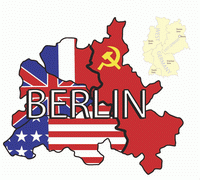Warsaw Pact saved the world from nuclear world war
Many tend to demonize the Warsaw Pact nowadays claiming that it cast evil shadow over “the free world.” However, the Pact became the only possible response against the aggressive actions of the then US administration when its efforts resulted in Western Germany’s incorporation in NATO. The union, chaired by the USSR, allowed to keep the fragile balance in the world.

On May 14, 1955 governmental delegations of eight countries (the USSR, Poland, Czechoslovakia, the German Democratic Republic, Hungary, Romania, Bulgaria and Albania) signed the Treaty on Friendship, Cooperation and Mutual Assistance. The treaty, which lasted for 35 years, became known in history as the Warsaw Pact.
One may have different approaches to that event. The geopolitical situation in the world has experienced enormous changes since that time. Many specialists say nowadays that the Soviet Union created the block which cast the evil shadow over the free world threatening the whole humanity. Generally, many bear a negative image of the Warsaw Pact, which in fact maintained the balance of forces in Europe for many years. The Pact became a response to aggressive foreign policies which the United States ran during the post-war years.
The collapse of Nazi Germany and the reorganization of Europe led to the opposition between the two world leaders – the USA and the USSR. The USA had nuclear weapons at its disposal, whereas the USSR could boast of the world's most powerful army which liberated Europe from fascism and set up its bases on the borders of the Western world. Each of the two countries could try to use their advantages against each other.
The trigger was pulled after Winston Churchill delivered his landmark "Iron Curtain" speech to an audience at Westminster College in Fulton, Missouri. Churchill frankly said during the speech that the USA could dictate its conditions to the world owing to its possession of nuclear weapons. The British diplomacy had only one prime goal: to set the leading superpowers against each other and gain the maximum profit from it. Churchill succeeded perfectly at that.
The idea of the global supremacy based on the possession of nuclear weapons became the key subject of Washington’s international policies. The USA developed dozens of plans in the 1940s to use A-bombs against the USSR. The plans basically differed for the amount of A-bombs and targets. In 1946 the USA planned to drop 20-30 bombs on the Soviet Union and level 20 cities. In 1949 the United States outlined 3,261 targets.
Washington acted so according to the doctrine of massive retaliation, which is based on the unrestricted use of nuclear arms in case of a military conflict. However, as US Defense Secretary Brown said in 1977, the USA could use the tactics of preventive strike too. In addition to A-bombs Washington needed European armies to conduct ground operations against the socialist camp. On April 4, 1949, twelve countries signed the North Atlantic Treaty to defend themselves against the threat of communist aggression. In other words, they legally set up a political and military block against the USSR.
It is worthy of note that Moscow’s response to the establishment of NATO was quite original. The Soviet government offered the USA, England and France, as well as its former allies, to consider an opportunity of USSR’s participation in NATO. Washington found itself at a loss for it implied that NATO was absolutely useless.
In return, the USA initiated the NATO membership process for the Federative Republic of Germany, which automatically aggravated the political situation in the post-war Europe. Western Germany obtained a possibility to form a multi-million strong army outfitted with modern-day arms and equipment. The Cold War became a reality.
The remilitarization of Germany and the powerful armed alliance demanded quick measures in response. The Treaty on the establishment of United Armed Forces and United Command was signed in Warsaw on May 14, 1955. Two super-powerful groups stood up against each other.
There were no objective reasons for the collapse of the Warsaw Pact. Most likely, it became history because of dogmatism and lack of foresight of the Soviet administration that could not understand internal processes taking place in Eastern Europe. In addition, the Soviet government contributed to critical processes in the socialist camp, which eventually destroyed the system of collective security of the Eastern block.
Translated by Dmitry Sudakov
Pravda.ru
Subscribe to Pravda.Ru Telegram channel, Facebook, RSS!





